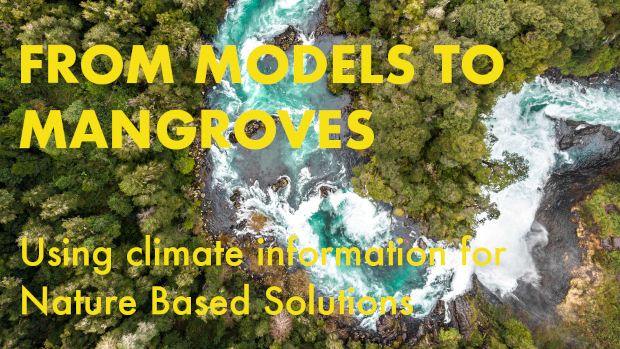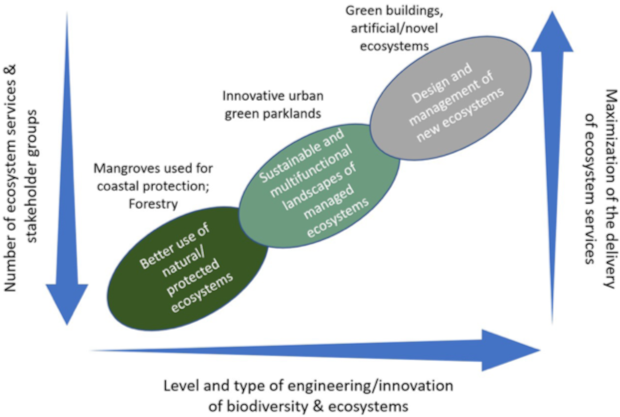AVAILABLE NOW - GWE Forum 2022 Panel Discussion
From models to mangroves: using climate information to design effective nature-based solutions
This panel discussion focused on the weather, water and climate information needed to support nature-based solutions (NBS) to reduce flood and drought risks and bring together NBS practitioners from the World Bank and elsewhere, policy advisors, meteorologists, and hydrologists to:
-
Review the challenges and opportunities of NBS to reduce vulnerability and build resilience to flood and drought risks. How are these practices be applied in development projects?
-
Assess the weather and climate data and information requirements, and how to reduce knowledge gaps, needed for NBS introductions to be successful.
-
Explore ways to create opportunities to support and enable the uptake of NbS in developing countries.
View the panel discussion here >>
The participants ...
-
Prof. Alan Jenkins, Deputy Director, UK Centre for Ecology & Hydrology.
-
Mr. Brenden Jongman, Senior Disaster Risk Management Specialist at the World Bank’s Global Facility for Disaster Reduction and Recovery (GFDRR).
-
Prof. Michael W. Beck, AXA Chair in Coastal Resilience in the Institute of Marine Sciences at the University of California Santa Cruz.
-
Dr. Nathalie Doswald, Senior Policy Adviser on Ecosystem-based Disaster Risk Reduction, Disasters and Conflicts Branch, UNEP.
-
Dr. Petra Holden, Postdoctoral Research Fellow, African Climate and Development Initiative (ACDI), University of Cape Town, South Africa.
-
Dr. Bregje van Wesenbeeck, Scientific Director, Deltares.
-
Anna-Maria Bogdanova, Disaster Risk Management Specialist in the Latin America and the Caribbean region.
-
Dr. David Rogers, Consultant, The World Bank
BLOG - Nature-Based Solutions
Weather, water and climate information to design effective nature-based solutions
Nature-Based Solutions (NBS) was a key issue at COP26 climate summit.
Its overarching concept encompasses a breadth of approaches that involve biodiversity and ecological function, to benefit human well-being and nature. In terms of weather, water and climate change, it primarily implies working with the ecosystem’s capacity to reduce vulnerability and build resilience to climate change, enhance food security, manage water resources, and reduce disaster risk.
It is anticipated that the public, private and academic sectors within the GWE will play a greater role to design, implement and scale NbSs. The magnitude of effort to tailor climate information to improve ecosystem services is increasing upon emerging demand.
Contributors to the blog include:
David Rogers, Boram Lee, Vladimir Tsirkunov, Alan Thorpe, Makoto Suwa, Anna-Maria Bogdanova and Brenden Longman
The WeatherPod
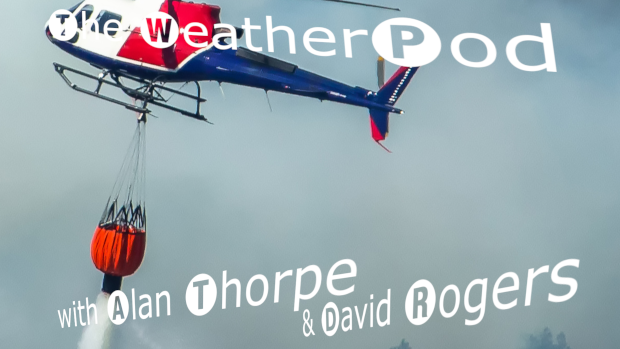 Episode 22: Perspectives from early career scientists on the evolution of the global weather enterprise Episode 22: Perspectives from early career scientists on the evolution of the global weather enterprise
Weather & climate information and the transition to a decarbonised global economy
Hosts David Rogers & Alan Thorpe talk to Dr .Shipra Jain and Dr. Marisol Osman about their experience as early career scientists of working within the global weather enterprise. Both Shipra and Marisol are members of the Young Earth System Scientists (YESS) community.
PUBLICATIONS
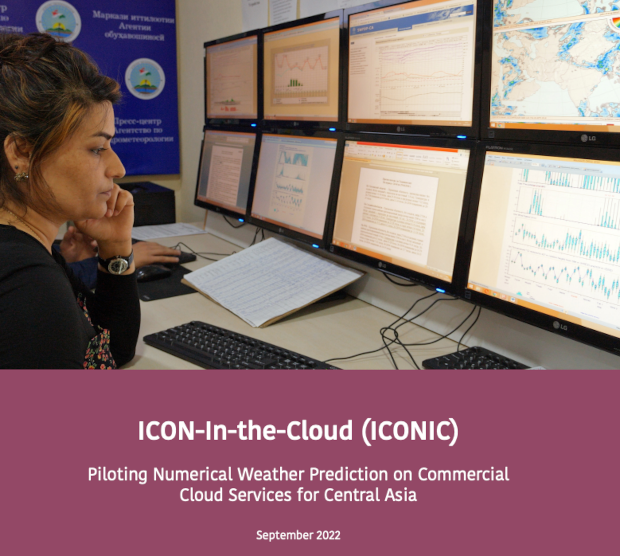
ICON-In-the-Cloud (ICONIC): Piloting NWP on commercial cloud services for Central Asia
High resolution numerical weather prediction (NWP) is critical for improved forecasting of expected meteorological conditions, especially for extreme events.
However, due to resource and capacity constraints, many NMHSs often struggle to operate and maintain the high performance computers nneded to run NWP models, which require costly facility and infrastructure investments, and a high regular budget for maintenance, electricity, cooling and expert staff.
This report looks at the experience of the German Weather Service (DWD), World Bank and World Meteorological Organization (WMO) when they collaborated to test the feasibility of running an operational NWP on commercial cloud computing services.
UPCOMING InterMET.digital Webinar
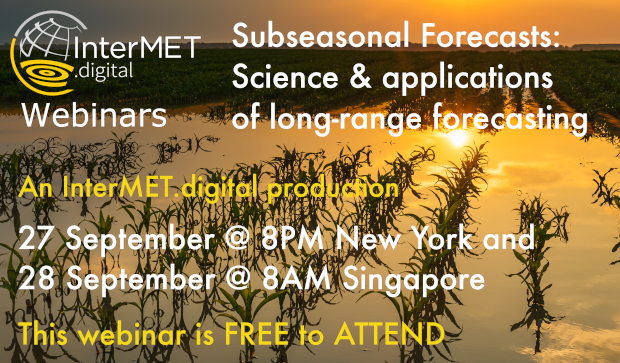
Subseasonal Forecasts: The science & applications of long-range forecasting
FREE TO ATTEND - 8PM US EDT on 27 September, and 8AM Singapore on 28 September
The science of subseasonal forecasts is rapidly emerging as a means to provide valuable environmental forecasts weeks into the future. Whereas the useful skill of traditional deterministic weather forecasts is limited to 14-day lead times or less, probabilistic subseasonal forecasts provide users the opportunity to extend the useful lead time beyond the deterministic limit.
After registering, you will receive a confirmation email from Zoom containing the webinar joining instructions.
THIS WEBINAR WILL ADDRESS THESE KEY ISSUES:
The Moderator & Chair
The Panellists
-
Dr. Nachiketa Acharya, Research Scientist III, Physical Sciences Laboratory, National Oceanic & Atmospheric Administration (NOAA)
-
Dr. Marybeth Arcodia, Postdoctoral Fellow, Department of Atmospheric Science, Colorado State University
Contacting the GWE Forum:
The GWE Forum can be contacted here

|

